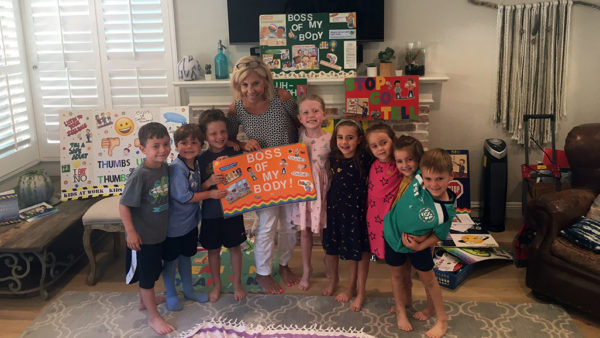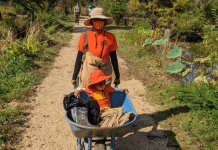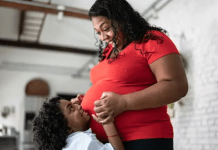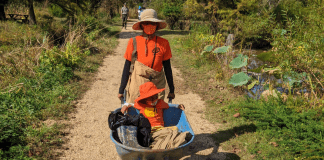My kids were only toddlers when I read the news: A teacher at a local school had been convicted of sexually abusing students as young as 7 years old. I was horrified. This was no stranger, but a trusted adult; a teacher; a father who lived nearby. Until then, I had been focused on babies, feeding, and changing diapers. Suddenly that all seemed simple was never really simple.
As I faced the preschool search, I now had to worry, not only about academics or pedagogical approach but about handing my children over to adults who might want to harm them intentionally. It was overwhelming.

At the same time, I knew that these instances were rare. I didn’t want to frighten my children or saddle them with this responsibility. I wanted sound, evidence-based best-practices on keeping our children safe, so I turned to the expert: Pattie Fitzgerald, the founder of Safely Ever After, Inc.
Patti teaches children, parents and even school teachers how to prevent abuse and keep kids safe. You could say she wrote the book on this topic, and yes, it’s a children’s book! Her tools have changed my whole approach to teaching kids about their bodies and respecting others. I interviewed Pattie so she could offer advice for all the parents who might share my worries.
Swap Scary “Stranger Danger” for Strong “Safety Rules”
Q: We grew up with the command “Don’t talk to strangers,” but you don’t like that phrase. Why not? What should we do instead?
A: Stranger danger doesn’t work for two main reasons. The first is that 90% of childhood sexual abuse happens by someone the family knows, not a stranger. So simply telling our kids not to talk to strangers doesn’t really empower them if someone they know and trust victimizes them.
Secondly, even if there is a stranger who wants to victimize a child, they will often appear friendly. They may use an enticing trick or lure so the child’s stranger-danger radar doesn’t always kick in even when it should.
A perfect example of this is that “help me find my lost puppy” trick—it doesn’t scare most children. This is why it’s more effective to teach kids to watch out for “Tricky People who break our “family safety rules” and empower kids with things they should DO.
Parents: The First Line in Our Kids’ Safety
Q: What are some things parents can do to watch out for dangerous people, without making our children paranoid?
A: Mostly, it’s our job as parents to watch out for the red flag warning signs in other people’s behaviors so that we can minimize the risk to our kids in the first place.
In my parent seminar, I teach parents to watch out for someone who’s almost too good to be true. Especially if they are often looking for alone time with your child, excluding the parent. Tricky people look for opportunities. I.e., the soccer coach who volunteers to take your child to the movies without you as a special treat, or a relative who is excessively physical to the point where you or the child is uncomfortable.
Of course, not every person who likes your child is a sex offender. However, it’s important to recognize the behaviors that indicate that you should monitor certain relationships or environments more closely.
On my website, there is a page listing “red flag grooming tricks.” I explain these to parents in detail so they can make smart decisions about who should or should not have access or private time with their child.
Empowering Kids to Stay Safe, Without Fear Tactics
Q: What are some less-frightening ways to teach our children to raise the flag if something seems dangerous?
A: As for teaching children without fear tactics, it’s most important to use an empowering and nurturing tone with kids. We don’t need to scare young children by saying they need to watch out for bad people. For example, teach them that they are “safety-smart” and that your family has special safety rules for kids and grownups. Then teach the kids a few “thumbs up/thumbs down” rules (see my Super 10 Safety Rules!). Kids understand the concepts of appropriate vs. inappropriate/thumbs up-thumbs down behaviors.
By teaching them these skills, we are actually giving them a more proactive way to respond if someone else is inappropriate. I like using specific words & phrases in my curriculum that are relevant, non-fearful, and actually work. My lessons include phrases like:
- “I’m the boss of my body.”
- We listen to our UH-OH feelings.
- Check first with our adults.
- Tricky people can be someone we know or don’t know if they’re doing ‘thumbs down stuff!”
These make more sense to kids and are not fear-inducing.
How to Respond If We Think Something Unsafe Has Happened
Q: If we think a child we know has been abused in some way what should our first response be?
A: First off, don’t freak out in front of your child… they’ll start feeling guilt/shame/fearful and worried about you, so they’ll stop talking! If you think a child has been abused, start by figuring out who else has been alone with your child, so you can stop it immediately.
If a child (yours or another child) starts telling you that someone makes them uncomfortable or has been inappropriate, say something like: “Wow, I am so glad you’re telling me. Tell me more. That must’ve been confusing (or hard/difficult). I want to help.” Have your child evaluated by your pediatrician.
In some instances, you may have to call law enforcement or Child Protective Services. However, it’s important that parents don’t ask “leading questions” or put words into a child’s mouth. It’s best to get straight facts like ‘who, what, when, where.’ And remain calm. Tell your child you believe them.
More Safe-Kid Resources
Q: Can you point us to some additional resources? How can we learn more?
A: On my website, there are lots of tips, short videos and helpful guidelines on all kinds of subjects. My blog page gives great advice on how to talk to children as they grow including ways to safeguard things like sleepovers, camps, playdates.
I’ve also written two children’s books that parents can find on Amazon: “No Trespassing—This Is MY Body!” and“Super-Duper Safety School.” These books help parents start the safety dialogue with your kids easily, without having to figure out how to do it all by yourself. They’re fun and based on my children’s curriculum.
I teach workshops and seminars, either in person or via Skype. So even if you’re out of my area, you can still participate. Additional websites like Darkness to Light and the National Center for Missing and Exploited Children are terrific resources for parents.
My main philosophy is that we can keep our children safe when we have the right information and effective tools. Safely Ever After was created because I knew there had to be a better way to keep children safe. My goal is to give parents resources so we don’t feel helpless.














